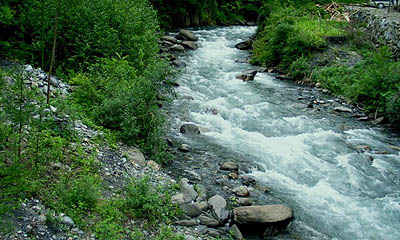|

Situated in the northwest of Sichuan Basin, Beichuan Qiang Autonomous County is 160 km away from Chengdu. It is under the jurisdiction of Mianyang City in northwest Sichuan Province. Administering three towns and 13 townships, Beichuan County has a population of 161,107 (as of 2006), with more than 50 percent being minority groups, including Qiang, Tibet and Hui. The Qiang ethnic group accounts for 94.9 percent of this total. The urban residents number 18,500, accounting for 11.56 percent of the county's whole population.
Beichuan is believed to be the birthplace of Yu the Great, founder of the Xia Dynasty (2100-1600 B.C.) and reputed tamer of floods. The establishment of the county traces back to as early as 566 in the Northern Zhou period (557-581) of the Southern and Northern Dynasties.
The land expanse of the county is covered mostly with mountains (98.8 percent) and foothills. The topography is higher in the northwest and lower in the southeast, with the highest elevation being 4,769 meters and lowest, 540 meters.
Climate
The climate in Beichuan is mild, with four distinct seasons. The yearly average temperature is 15.6 degrees Celsius, and the average annual precipitation reaches 1,399; the average sunlight is a mere 93-1,111 hours.
Economic Development
The infrastructure facility in the county is relatively complete, with the Chengdu-Qingchuan provincial highway passing through the county from south to north, and the other highway, Chengdu-Aba, passing through it from east to west. The highway network, with a total length of 670 km, connects well between townships and the county. Electricity is ample, and natural gas is popular in urban areas. Telecommunications have developed fast, making the whole county accessible through mobile phones and wireless pager services.
Natural Resources
The county boasts various metals such as gold and noble metals, as well as ferrous & nonferrous metals; it is home to 355 types of fauna and flora, including animals under first-class state protection, such as the panda, snub-nosed monkey, antelope and roe.
The soil, with high organic materials and moderate acid and alkali, is suitable for growth of multiple crops. Its forest coverage area is 46 percent, providing high-quality air and drinkable water. The county is rich in water resources; several rivers flow through it, including the Qianjiang, Baicaohe, Qingpianhe and Bahe rivers. The county's water storage capacity of 490,000 kw is able to generate 348,600 kw of electricity annually.
Tourist Attractions
There are many nature attractions here, including the Xiaozhaizigou and Piankou nature reserves, and the Yongping Castle Site.
a. Xiaozhaizigou Nature Reserve
The great valley in Xiaozhaizigou, as deep as 3,219 meters, harbors over 1,600 kinds of subtropical and sub-frigid plants, such as dove tree and yew. Many of these are endangered. The valley also shelters more than 200 species of amniotes -- including the panda, snub-nosed monkey and antelope, which are under first-class state protection.
b. Piankou Nature Reserve
The 83-square-km Piankou Nature Reserve, established in 1993, mainly serves to protect rare wild animals and plants. It shelters more than 208 species of vertebrates, including 39 species of animals under first-class state protection.
c. Ancient castles
These are ancient homes of the Qiang minority group usually built on mountain rocks. The Qiang minority group was even called "an minority group living in the clouds." Some castles served as both defense from invasion and living quarters, and were built along with two- or three-story houses. Yongping Castle was one of the sites built during the Ming Dynasty (1368-1644), and was found in 1988 in the county's Yong'an Township. |
